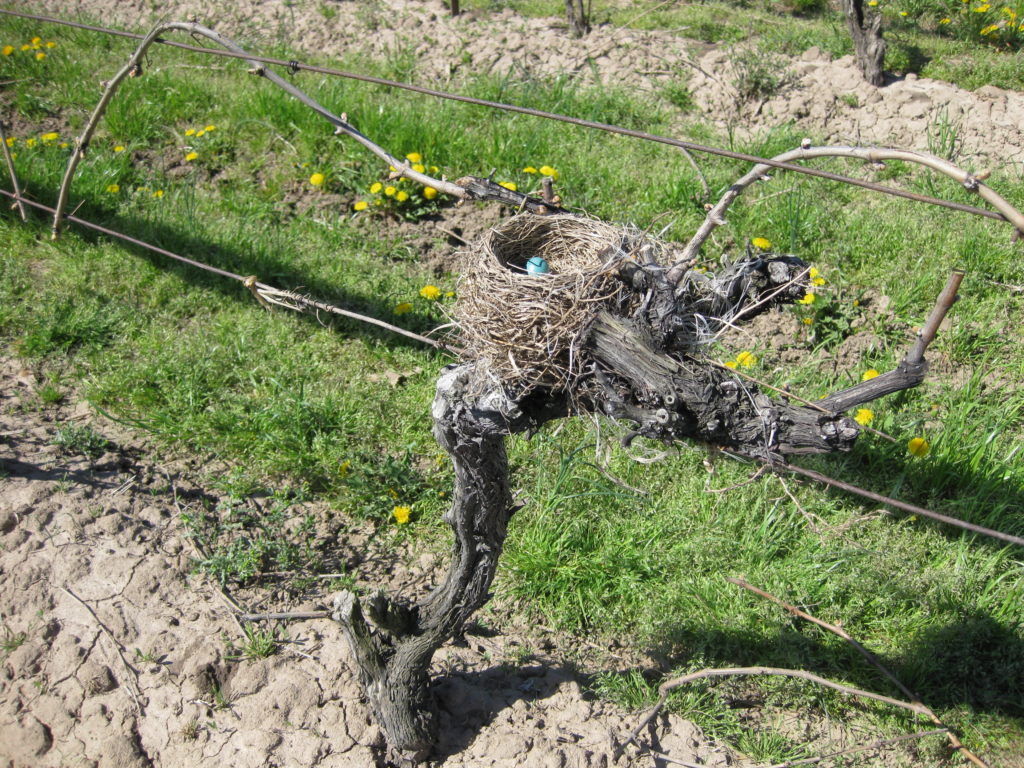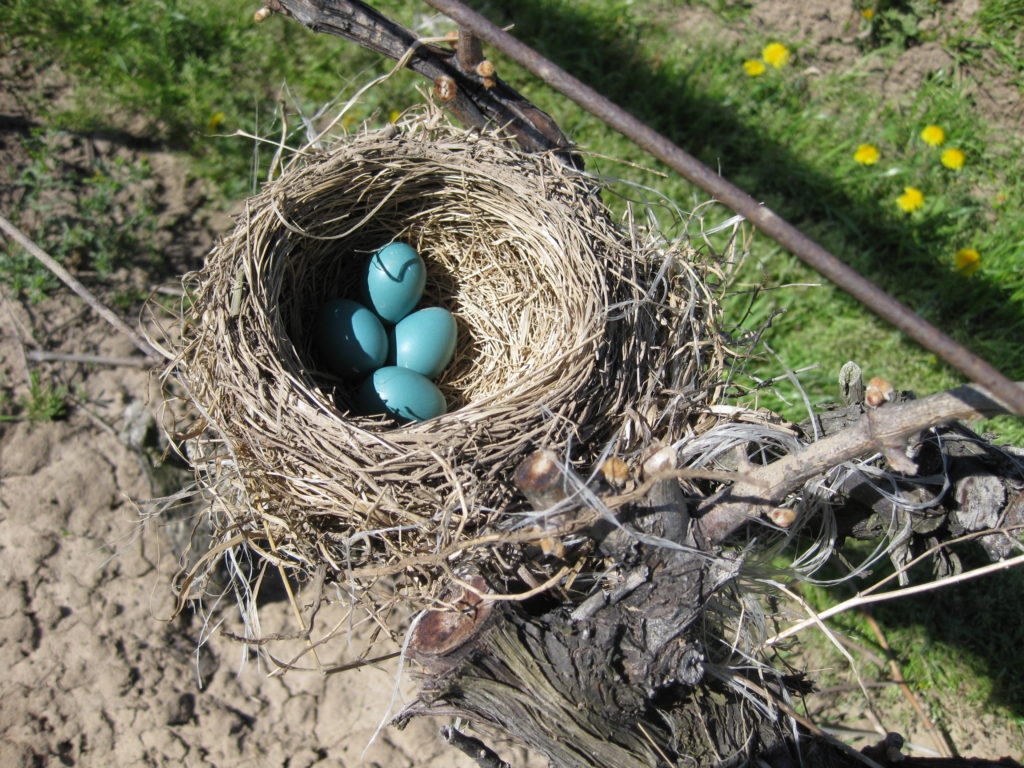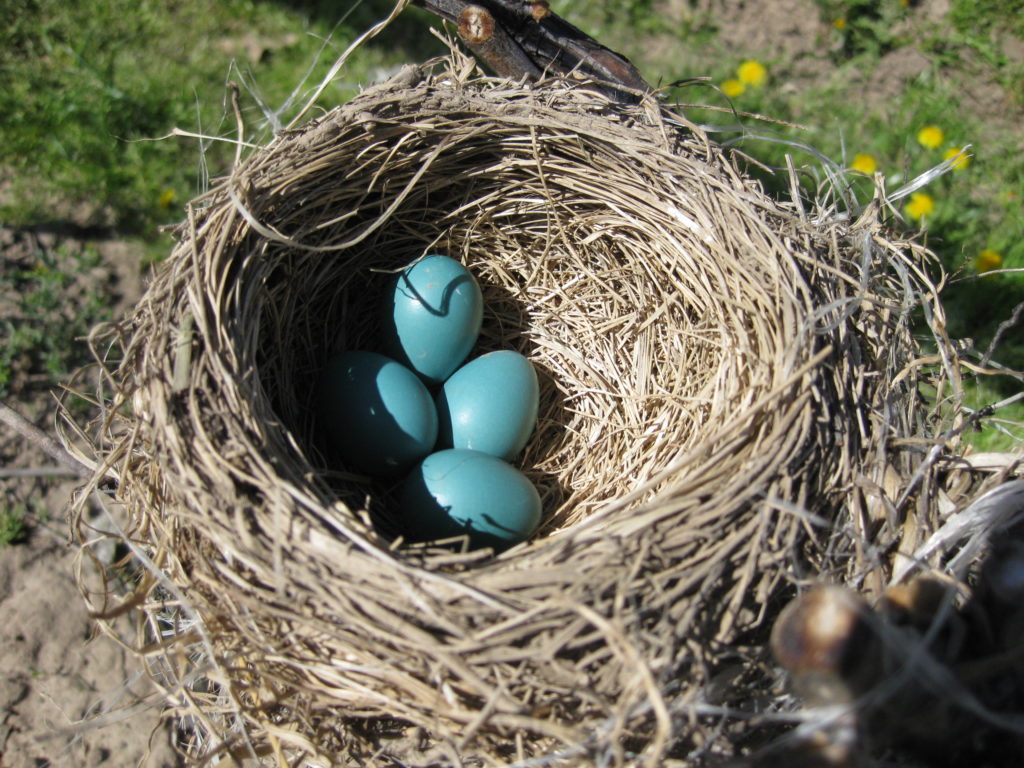Is it a Shiraz or is it a Syrah? The debate over the name of this wine has played out numerous times around our tasting table since we released our first one back in 2008. That 2008 “Shiraz” was a hit with our friends, but most agreed it was more reminiscent of a “Syrah” in style.
I get a kick out of this debate because it brings me nostalgically back to the origins of this grape in our vineyard. We planted Shiraz Clone 100 back in the late 90’s at the request of Creekside Estate Winery, who were bravely setting out to turn Shiraz into a key part of their varietal portfolio and winery identity. Fueled by the knowledge and vision of an enterprising Australian winemaker, Marcus Ansems, my parents agreed to plant the 11 rows of Shiraz that now stand tall along our driveway, across from Wilma’s lavender.
Upon planting, we quickly found out that these vines loved to grow! They shot up like the most vigorous of weeds, making us wonder why few farmers had attempted to grow this grape variety in Niagara before. The first cold winter would provide us the harsh answer to that question.
Just as the vines were starting to mature and bear their first fruit, we were hit with some cold winter conditions that killed nearly half the vines in our new Shiraz vineyard. The Achilles heel of this fast-growing, high-cropping varietal was now all too clear. Should we replant the vineyard or wash our hands with Shiraz altogether? This was a tough call, but in the end we decided to give it one more shot. Thankfully, the winters have been more co-operative since then and we’ve also learned a few tricks in the vineyard to help the vines overwinter better. We switched from a Scott-Henry training system to a more simple, two-arm pendelbogen trellis. More attention was paid to controlling vine vigour through soil nutrition and cropping levels. The vines performed well enough to merit planting 8 more rows of a second Australian Shiraz Clone (#7) in soil with higher clay content to aid in vine development. Both blocks are doing well to this day.
Due to the success of these Shiraz vineyards on our farm and the legitimacy brought to the varietal by Creekside (think luscious Broken Press Shiraz…mmmm!) it was a no-brainer that I would order a large run of labels adorned with “Shiraz” for my 2008 debut. However, as it came time to blend my 2008 Shiraz – the jammy, hot (high-alcohol) and bold notes present in all of our favourite Aussie “critter” wines were nowhere to be found! In fact, every time I sampled these barrels I felt as if I had just tacked up a horse and ridden through a fragrant lavender field, only to suddenly realize I was surrounded by blackberry bushes and Marijuana plants (for the record this has never happened…yet). Alas, despite what thousands of freshly printed labels now proclaimed, my first Shiraz had just become a Syrah – and I didn’t mind one bit!
A second issue with growing Shir..I mean Syrah in a cool climate is that it tends to ripen very late in the season, making it a challenge to vinify in lackluster, “shorter” growing seasons like 2009. For that reason we decided not to attempt a Syrah in 2009 as the acidity levels never seemed right for crafting a premium wine.
The opposite was true for 2010. It will be remembered as one of the warmest vintages Niagara has ever seen. The growing season started early and never slowed down. Precipitation was spotty but adequate – just perfect for wine grapes. We harvested the Syrah on October 11, much earlier than any other vintage. Sugar levels hit an all-time high (24°Brix) and the skins and seeds showed excellent maturity. Three rows were selected from the older Clone 100 block (#2,9,10) along with two rows from the younger Clone 7 block (#4,8).
The fruit was de-stemmed into bins, which were then sealed for a four-day cold soak on the skins. Fermentations were allowed to start wild, then inoculated with a yeast known as “Enoferm Syrah” (an isolate from the Côtes du Rhône in France). It was chosen for this ripe fruit because it’s known to be a good glycerol producer for smoother mouthfeel with typical aromas including violets, raspberries, cassis, strawberries and black pepper. Fermentations lasted about 8 days with temperature peaks around 28°C. I could tell early on that this wine would one day be something special!
Five barrels were filled following pressing. The Clone 7 fruit was racked to a new Taransaud barrel and a two-year-old Billon, while the Clone 100 fruit was split between two older French and one American oak barrel. The wine was allowed to mature in oak for 24 months. We bottled 118 cases of this Syrah on March 26th, 2013. This wine, along with all of our 2010 reds, is now available for purchase.
Price: $50/bottle
Alcohol: 13.4%
Cellaring: 3-5 years



